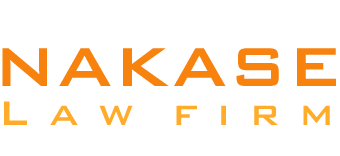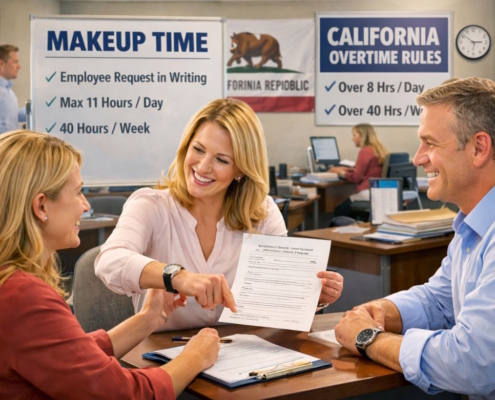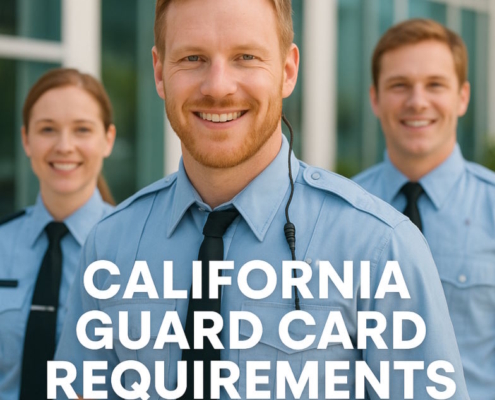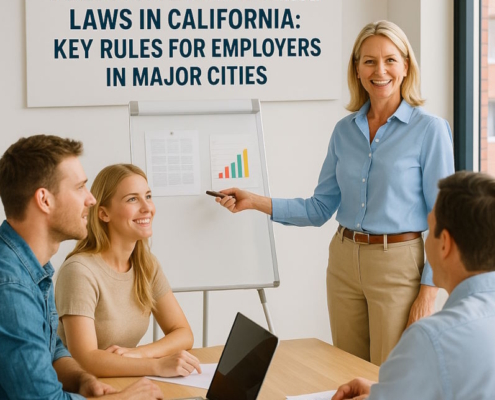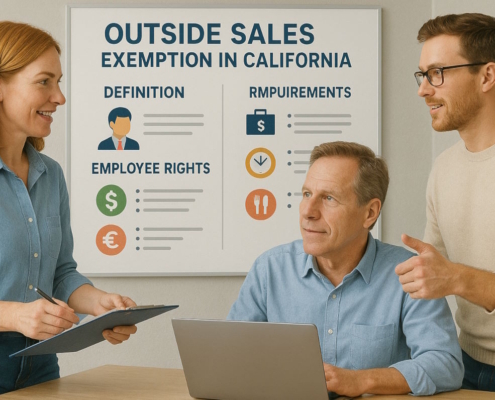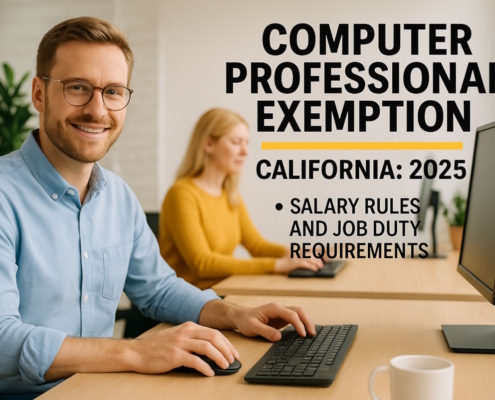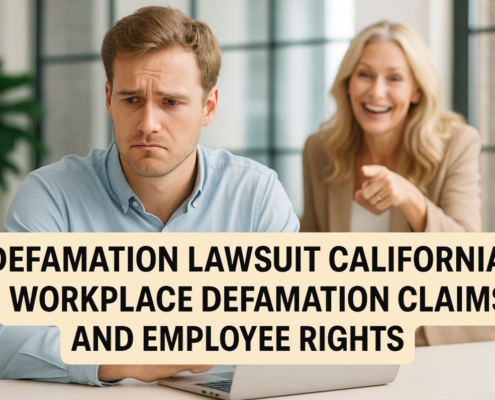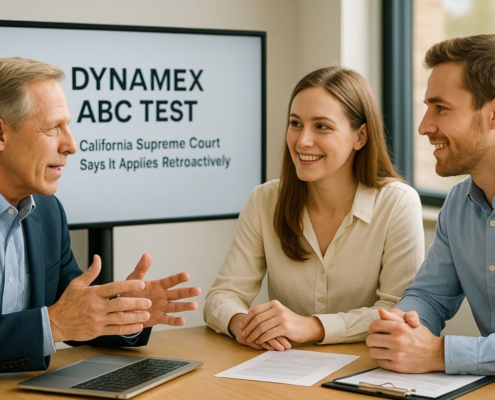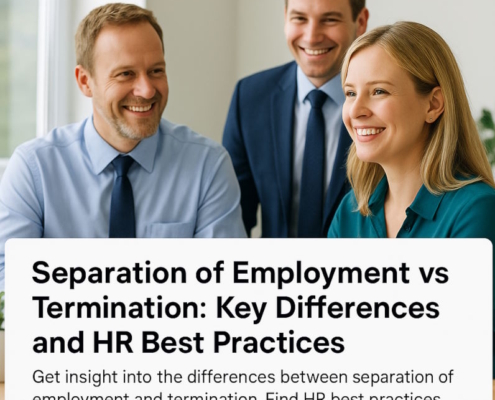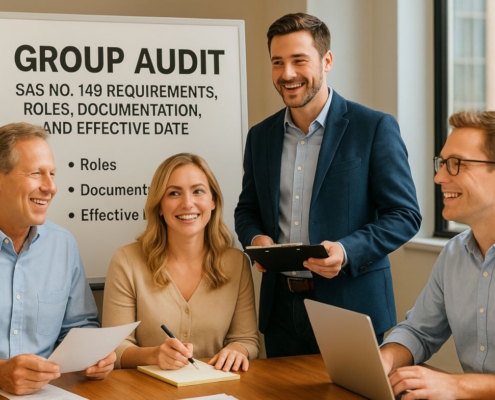Introduction
Employers are mandated to fill and retain Employment Eligibility Verification, Form I-9, on hand concerning each employee they recruit (according to Federal regulations). Recent changes could also prove challenging even to HR experts when properly filling out the form.
HR executives need to understand the peculiarities of I-9 compliance standards. The issues could arise, no matter whether you have to manage a team of hundreds or hire your first employee. The following sections will try to answer the most frequently asked questions about Form I-9 compliance.
Basics of the I-9 Form
1. Use of Form I-9
The aim of Form I-9 is to ensure that employers don’t recruit people who do not have the right/permit to seek employment in the US.
2. When did I-9s become necessary?
The enactment and signing of the Immigration Reform and Control Act in 1986 was the birth of I-9s. There are two key obligations stipulated by this law toward the employers:
- Employers are not supposed to hire undocumented people or retain them in the company knowingly.
- Employers have the responsibility to ensure compliance with an employee using Form I-9 to verify their eligibility to be employed. This requirement is prescriptive to all employees, full-time and part-time, with some exceptions to workers employed before 7th November 1986, regardless of whether they are an immigrant or a citizen.
3. I-9 Compliance Form: Current Version
You can easily download the recent version of the I-9 Form from the website of the US Citizenship & Immigration Services. It’s dated 1st August 2023 & it expires on 31st May 2027.
It is identical to the form with the 1st August 2023 edition date that became obligatory on 1st November 2023, except for the expiration date. The prior form’s expiration date is 31st July 2026. Both forms are valid until their expiration dates.
4. I-9 Compliance Form: Modifications in 2023
Changes implemented according to the USCIS included:
- Simplified Sections one and two into a single-sided document
- Tablets & mobile devices with fillable forms
- Section 1: Translator/Preparer Certification has been moved to a stand-alone addendum that businesses can offer workers if needed.
- Section 3: Reverification & Rehire has been moved to a stand-alone addendum that businesses might print if or whenever reverification is necessary or rehire takes place.
- Some appropriate receipts, instructions, and links to details on automatic renewals of work authorization papers have been added to the Lists of appropriate documentation page.
- Form instructions were condensed from 15 to 8 pages.
- Added a checkbox enabling employers to specify that, instead of conducting a physical examination, they reviewed Form I-9 documents remotely using a DHS-approved alternate technique.
Employers are also instructed to locate samples of several papers in the Guidelines for Companies (M-274) using the new form.
5. Who needs to fill out Form I-9?
Both the employer and the employee have deadlines for completing their parts of the form. The employer must finish Section 2 within a three-day period of the worker’s start date, and the employee must finish Section 1 by the day they start working.
Filling out the I-9 Compliance Form
1. Section 1
The employee needs to fill out the initial portion of the I-9 (Section 1) prior to their initial day at work. The onboarding process generally allows employees to complete their information online.
Employees are asked in this portion if they are citizens of the United States and if they have the right to work there. An employee needs to complete their:
- Name
- Date of birth
- Address
- Email address
- SSN
- Citizenship status
- Phone number
- Status of Work Authorization, if applicable
Employers are mandated to make sure that workers date the document and sign their names. A violation could arise from any data that is absent.
2. What are the typical Section 1 errors?
The following errors are commonly seen in the I-9’s first section:
- Not finishing Section 1
- Immigration status box not checked; incorrect signature or date
- Not a complete address
- Absent Social Security number (in the event that E-Verify is being used)
3. What does Form I-9’s Section 2 serve as?
The company is in charge of Section 2. After a hire, it needs to be finished in three working days. Pro tip: In case the documents are divided, write the ID and firm name on the very top of every document.
Learn about the lists of eligible papers below:
- “Documents that highlight both identity and company authorization” are listed in List A.
- List B: “Identity-establishing papers”
- “Documents that show employment authorization” is listed in List C.
Employers or a designated representative are required to:
- Examine the paper or documents that validate the worker’s identification & eligibility for the job.
- Documents that are about to expire are acceptable, but expired documents are not accepted. A newly issued receipt for a Social Security card is valid as long as the newly issued card is shown within ninety days.
- In List A, enter the document number and title, the issuing authority, and the expiration date.
- Enter the date of your joining day.
- Verify the review of the paper or documents by signing them and providing the company representative’s details.
4. What does Form I-9’s Section 3 serve as?
Employers are also responsible for Section 3, which is now known as Reverification and Rehire (Supplement B). Please fill out this supplement:
- When a worker’s temporary work permit expires and has to be renewed
- When a worker gets a new job within three years of completing their initial I-9
- When a worker’s name changes
This portion is usually left empty. Driver’s licenses, passports, green cards, and permanent residency cards do not need to be re-verified. An employer is intentionally hiring an illegal worker if re-verification is necessary and they fail to do it.
Acceptable papers that require additional verification:
- Visas
- Employment Authorization Document
Which documents are acceptable for Form I-9 receipts?
In the interim, before new official papers are ready, the following new approved receipts can be presented:
- Receipt for replacing a List A paper that was misplaced, stolen, or destroyed
- Form I-94 provided to a legal permanent resident with an I-551 stamping and a photo of the person
- Form I-94 given to a refugee with a “RE” notation or a refugee stamp, or
- Receipt for an alternative List B or List C document in the event that it is misplaced, stolen, or damaged
What obligations do employers have when filling out the I-9 Compliance Form?
The good thing is that investigative work is not demanded of HR personnel. It is not necessary to expose each document to a blacklight. Original I-9 compliance papers that seem authentic and pertain to the person presenting them must be accepted by employers.
Guidelines for the Remote and Pandemic Era
1. I-9 Compliance: Impact of COVID-19
Because of COVID-19, the Department of Homeland Security loosened its requirements for in-person I-9 authentication (March 2020). But on 31st July 2023, the flexibilities came to an end. By 30th August 2023, employers have to finish in-person actual document checks for workers whose documents were examined online during the interim flexibilities.
2. How can remote workers be verified?
Employers have traditionally struggled to verify remote workers, and as more companies transition to a remote-first environment, this difficulty will only increase.
Typical workarounds consist of:
- Using a lawyer, a trustworthy agent, or a distant corporate representative
- Permitting two remote workers to check each other’s paperwork
- Inviting distant workers to participate in on-site training and confirming their documentation
- Enforcement & Compliance Issues
I-9 violation penalties
U.S. Immigration & Customs Enforcement may impose fines for inaccurate or incomplete I-9 compliance. I-9 compliance infractions now carry harsher punishments. The magnitude of the company and the quantity of infractions are two of the many variables that influence the level of the fines. The current spectrum of potential sanctions is as follows:
- Penalties for the initial offense of substantive breaches or unresolved technical faults on I-9 compliance papers vary between $281 and $2,789, respectively.
- For each intentionally hired undocumented worker, the fines for recruiting, referring, and rehiring unlawful non-citizens vary between $698 and $5,579 for first violations.
- The fines for 2nd and further offenses are between $5,579 and $27,894.
There are severe penalties for companies that attempt to deceive ICE or disregard reliable warnings. Businesses may also be penalized for “subsequent crimes,” even if they have already been penalized in the past.
1. If a worker uses a fake ID for I-9 verification, what can employers do?
An employee’s employment has to be terminated if it is discovered that they lack the required permission to work or that they have submitted false papers. Even if they initially submitted fraudulent documentation, an employer can still keep them on staff if they can demonstrate that they currently possess the proper paperwork and that their position has been “regularized.” With the updated documentation/paperwork, the employer needs to fill out a new Form I-9 and add it to the previous one, along with a dated & signed explanation.
If your company has a policy of openness, be sure to implement it consistently. You might be compelled to fire employees in this situation if you have fired workers in the past after discovering proof of deception. Discrimination could be implied by any discrepancy.
2. What are the most typical errors employers commit when verifying I-9 compliance?
Employers should avoid the following key no-nos:
- Wait until a confirmation of employment is officially made before requesting that prospective seekers complete an I-9.
- Reject documents that have been photocopied.
- Never instruct staff members on which documents to bring, even if you’re really attempting to be helpful.
- Don’t accept a document that has expired.
3. Who is in charge of fixing mistakes on I-9s?
The only individual who should fix the mistakes is the one who finished the section. It is preferable to fill out a fresh form and affix it to the previous one if there are several mistakes. Include a paragraph outlining the rationale for the modifications.
- Use another hue of ink for the date and your initials if you are adding missing information.
- Draw an arrow to the appropriate list and add the date and initials, ideally in another shade of ink, if data has been entered in the incorrect list (for example, a driver’s license is in List C or a Social Security number appears in List B).
- If you find that there is too much information, cross it out and add the date and your initials in another shade of ink.
4. Do employers need to keep I-9 supporting documents?
Although various state regulations specify which papers must be copied and retained, federal law does not mandate that businesses maintain copies of supporting evidence.
Maintaining supporting documentation is always advised, regardless of requirements. You can strengthen your defense in the wake of an ICE investigation by creating copies and preserving them. For example, you might have neglected to note a driver’s license’s expiry date; if you have a duplicate of the license, this is merely a technical error, and you won’t be penalized.
Maintaining supporting paperwork will also make conducting internal I-9 compliance audits easier.
Documents should be kept apart from employee files, with the I-9 itself. The Work Authorization documentation should be attached if you utilize E-Verify.
5. How much time should employers keep I-9s on file?
All existing employees should have their Form I-9 kept on file. Former workers must be kept on file for a period of one year following their departure or three years following their initial hire, whichever comes first.
You can delete these records once the retention time has passed, but always seek a second view to avoid ever having to tell ICE why you unintentionally deleted the documents they requested.
6. Is it possible for ICE to perform an inspection without informing an employer?
Federal officials can only inspect I-9 compliance paperwork in person or by requesting that you deliver it to them via certified mail because they are stored on-site rather than being transferred to the government. This implies that you will be notified in advance of any examination and that you will have a minimum of three days to present supporting documentation. Employers in Oregon and California are obligated to notify staff members in advance of an impending inspection.
Internal Reviews & Best Practices
1. What makes an I-9 inspection important for a business?
Internal checks are the most effective method for identifying mistakes and assessing your culpability. You won’t have to worry about a notification from ICE in this way. The size/type of your company largely determines how often you should do audits. You’ll probably need more frequent audits than most if you work in a sector with a high employee turnover rate, such as manufacturing or restaurants.
2. Who should perform an I-9 internal audit for a company?
Your audit should ideally be carried out by an immigration lawyer or other qualified specialist. Ensure that the person evaluating the I-9 forms isn’t the same person who initially filled them if you’re doing it internally.
3. Why is an immigration compliance code necessary for businesses?
The majority of businesses will include a line about immigration conformity in their employee handbook, but this is insufficient. You can behave more consistently and be in the best possible situation in the event that ICE issues a surprise notice by establishing an immigration compliance strategy.
The following are the questions you should address when developing immigration compliance guidelines:
- Who is in charge of immigration compliance? (This isn’t just “HR,” it should be a distinct name.)
- Is supporting paperwork kept on file by your organization?
- Does your business make use of E-Verify? (This may be needed by law in some states.)
- Who is in charge of the Form I-9 retention guidelines?
- If an ICE Notification of Inspection is issued, who should be notified?
- What rules do you have about hiring outside contractors?
- Do you provide employer representatives with I-9 form completion training?
- What’s the frequency of your internal audits?
- I-9 compliance records are accessible to whom?
- Who is responsible for overseeing the re-verification processes for workers who possess Employment Authorization documents?
- Is everybody aware that hiring people who are unable to follow work authorization regulations is strictly prohibited?
By automating new recruit processes and recording form completions in a central area, onboarding software streamlines the process of completing and storing the necessary paperwork. Onboarding forms are safely saved in the employee’s digital file with a time stamp and electronic signature verification, guaranteeing convenient access anytime needed.
